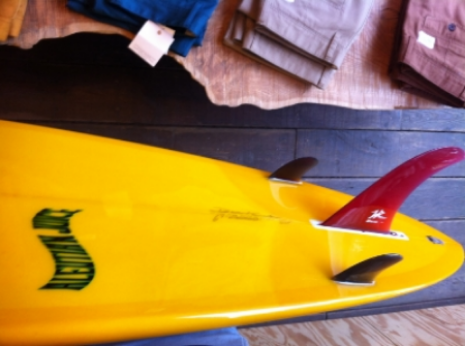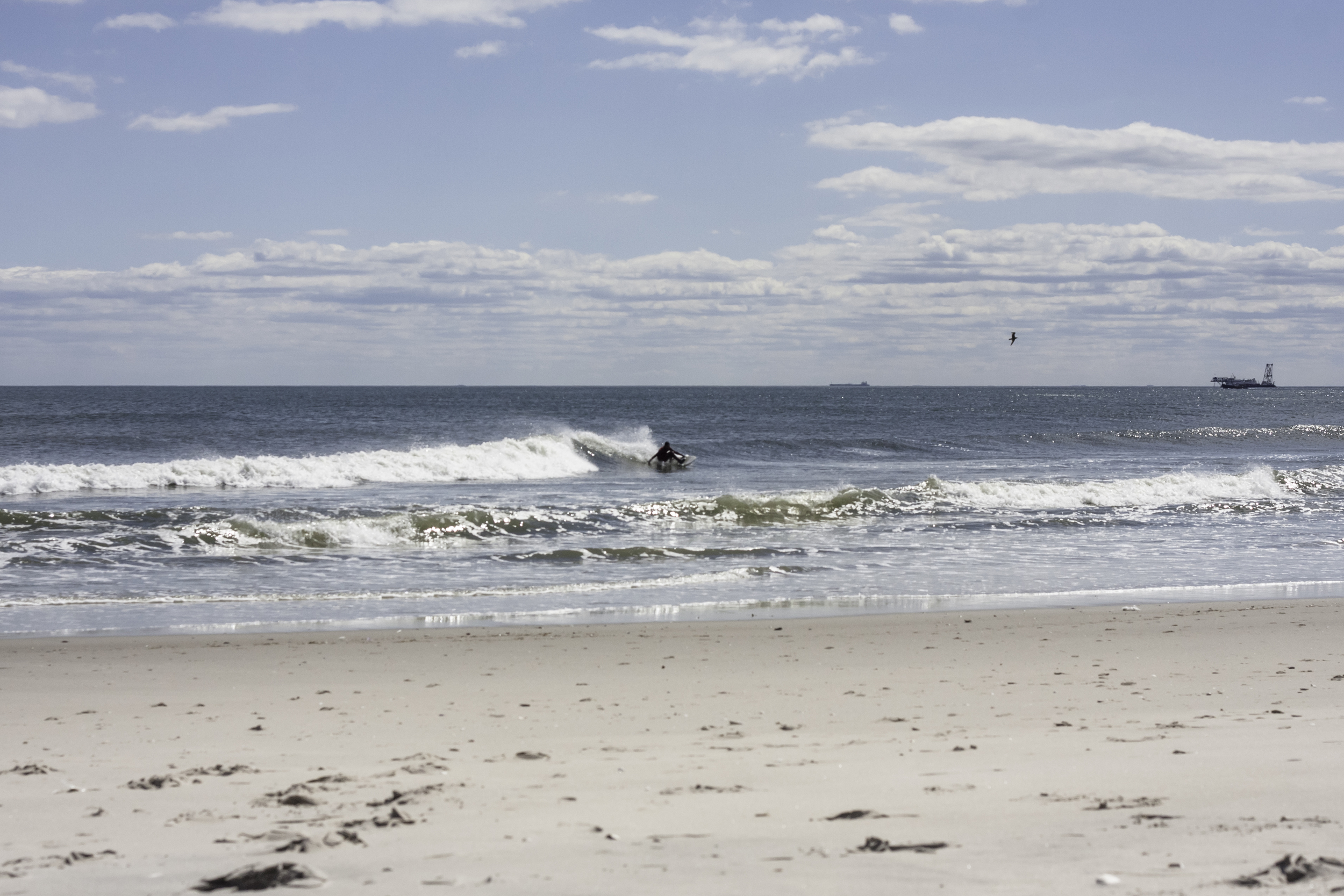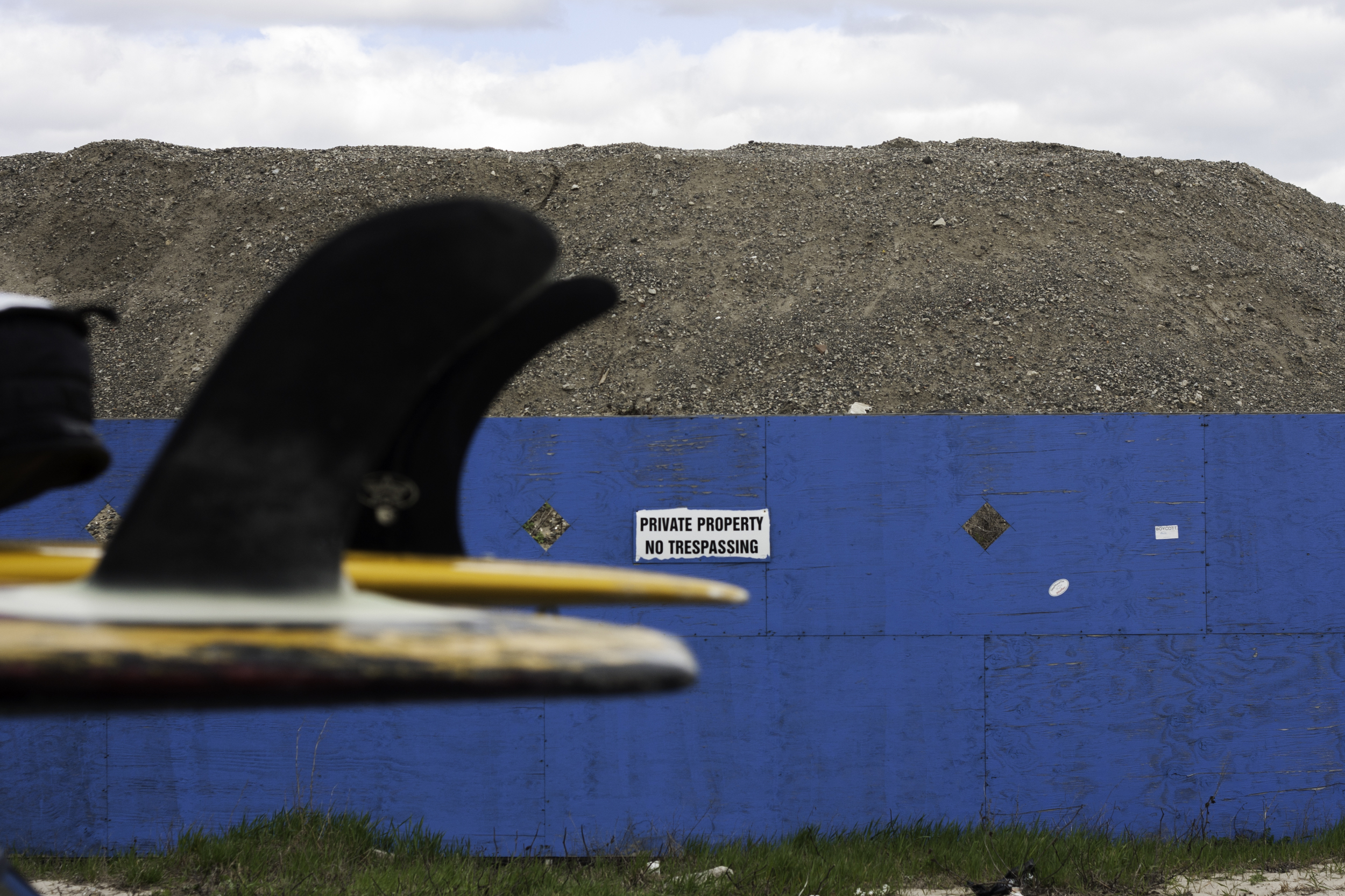It’s Father’s Day, so today’s style heroes post is dedicated to my dad, Richard “Maddog” Mattison, who taught me to surf. He would always sit deep on the biggest peak and take off on the most critical set waves. The move I saw him do most was the fade to bottom turn (where you start off going almost the opposite—or exactly the opposite—direction you are intending to go and then crank the bottom turn hard to pull yourself around and up). My dad’s fade made his already dynamic bottom turn even more dynamic—he threw more spray off of the bottom than most people do off the top. He was always calm and smooth on the wave and never surfed with any excess or jerky motion.
A few years ago he suffered a stroke and while he’s fully recovered, he can’t surf in the way that he used to. Now he spends a lot of his time taking pictures of waves and sea life, fishing, and hunting. He lives in Moss Landing, CA with my stepmom, Cheryl, and their two dogs, Maddy and Tippy.
Richard "Maddog" Mattison
1. What inspired you to start surfing? When did you start?
We moved to the Monterey bay area in 1955 and I began diving with my father and family in the late 1950's. We would take family dive trips to the Channel Islands and drive along Highway 101 and then Highway 1. My first time surfing was in SoCal where my Dad rented two surfboards, one for my brother John and one for me. I was immediately hooked and so excited I was beside myself stoked! John and I were riding whitewater and having a ball when my brother pearled and fell off his board. As he went out to get his board a wave picked it up and it came sliding into his mouth knocking out his two front teeth. Our first surfing expedition ended with a trip to the hospital. I was so bummed that my my brother got hurt, but even more bummed that we had we had to stop surfing that day. In addition, my parents spent the remainder of their parenting of me trying to convince me that surfing was NOT a productive endeavor.
I started surfing in 1966. I was a freshman in high school. I moved out of our family home and into a tent on the beach in 1967. I believe it rained 46" that year, but the surf was firing. I surfed before school, finished high school, and worked. Mom still did my laundry, and Mom and Dad always had food for me.
2. What was your first surfboard?
My first board was a yellow 10'3" O'Neill bump with a big spoon nose. This was the era of toes on the nose and walking the board to the nose for a good cheater five. Hanging ten was what it was all about.
As the short board revolution came into play we would cut down our longboards and make short boards out of them.
3. Who were your style heroes?
There was much less in the way of information and media attention in those days, so exposure to various styles was limited, particularly in Central California where we lived. The scene was in Santa Cruz, where we had Danny Anderson, Doug Haut, and Mark Angel, who were always great to watch. It was a different time, with long boards that required skill to ride and maneuver so you didn’t eat it for a long swim when you lost your board. Locally in the Monterey Bay there were some great standout surfers. In Moss Landing Russ Yashimira was and still is as stylish as anyone, and among my peers Paul Beagle was fluid and great. From the Carmel/ Monterey area we had the likes of Dickie Cross and later John Baker, Timmy Watts, Marc and Rickie Cross who were magic on their boards. Tim Flannery would dominate the break at Lovers Point when it got big. As media information flowed, David Nuuiva and Billy Hamilton were as stylish as could be. Most surfers then as now were on the smaller side. Being a bigger guy I gravitated away from the smaller waves and started looking for what else was out there. Barry Kaanaaiiapuni was a surfer with the kind of power and flow that I dreamt of.
4. What do you think constitutes good surfing?
There are many different levels of "good" surfing. First and foremost there is never any good surfing without strong swimming and strong paddling. The goal is to be a strong paddler--not only to catch the waves you want, but also to stay out of the way of surfers riding waves as you paddle out. If you are paddling out and get caught inside as a good wave comes through with a rider on it, you must paddle for the pit so the rider can maximize the wave.
Good surfing is also knowing your limits. If you can surf competently in any conditions, that’s great, go for it! However if your skill level is marginal, or the swell is big, or your paddling is weak, it would be "good surfing" to watch the prime break from the shore. Or if you just have to be out there, be there off to the side in a lesser wave.
5. Is there a wave or waves you surfed that stand out for you?
I have to separate my most memorable waves into BC (Before Children) and AC (After Children). I have many memorable days and waves in my home break yet my BC early standout memories come from my travels. As you know, I typically worked summers diving, then had winters to travel. Puerto Escondido in the mid 70's was insane because there was nobody there and the waves were soooo hollow.
My most memorable waves came during a session at Hookipa Park on the North Shore of Maui again in the late 70's. I had surfed Honolua Bay that morning, but it was small so I came back to Hookipa as I was living nearby. The trades were light and straight offshore (the trades usually blow sideshore there) as the swell began to build. 4’ to 6' building to 8-10, then 12-15 with perfect shape. I caught a bunch of waves on this building swell. There was one wave where I took off really deep and went straight to the bottom to make my turn. As I hit my first turn, the lip hit me in the head as I turned under it and into a monster barrel that I couldn’t see out of as it hooked and bowled to the right. As I pulled up into the wave, the barrel actually got bigger and opened up to let me through. I made five or six pumps along the face inside the barrel before I could make it out the other end. I caught maybe a dozen waves that session in that building swell, but that was the one.
Then after three or four hours the wind turned sideshore and this little kid named Robbie Nash sailed out into the break on something called a windsurfer and tore it up, using the trades to drop into huge waves and absolutely shredding it!! I had never seen anything like what he was doing out there. I never saw Hookipa like that before that day, or ever again.
My later AC standout days and waves were much more fun for me because they were waves and times I shared with my kids.
6. What was it like for you when your kids (my brother Andrew and I) started surfing? Did you always think we'd be drawn to it or were you surprised when we did?
I initially had a hard time with my kids surfing. Surfers by nature are absolutely selfish creatures who can only think of the next wave. You and Andrew had your friends at the beach and boogie boarding was what you two wanted to do when you were little. That was fine with me as I wanted to be the one surfing--until I realized how much fun it was spending time in the water with you and Andrew. My most memorable wave of all time was coaxing a scared Dion to paddle out with me on a longboard at Rincon. We rode several small perfect waves together laying down on that board and it was the first time you ever got tubed. I’m pretty sure you liked it.
7. Describe your relationship to your surfboards, and to Doug Haut, your main shaper in particular. How many boards do you think you got from him over the years? Any particular boards that stand out?
Doug is a remarkable shaper and made and makes some truly magical boards. He is also a great guy, and we’ve become friends over the years. I had a period of time when my quiver would always be at least six to ten boards to cover the size of surf and various breaks.
I also had some fantastic boards from other shapers, like Geof McCoy, Mark Angel, Dick Brewer, Tom Winterbern, Gerry Lopez. But much of my surfing was here or originated from here in CenCal, so Doug was a great shaper who always made me a reliable ride. A reliable board is what you want. I tried lots of different shapers and boards. Due to my style I was always drawn to versions of square tails and or rounded square tails. The best board I ever had was actually a baby blue 6'10" shaped by Mark Angel. I worked with him and designed what I believe to have been the very first swallow tail. I called it an inverted square tail. That board was truly magic. I broke it at Honalua Bay in 1970/71 in truly big surf.
8. What do you feel were your particular strengths as a surfer?
Swimming, breathholding, and paddling. I was very comfortable in the water. Plus, I believe I had a pretty decent bottom turn and an okay roundhouse cutback. I thrived in bigger surf.
9. You're pretty darn blind. Can you say a few things about surfing with contacts on? Any particular tactics to keeping them in?
I didn’t have contacts when I started surfing. Of course we did not have wetsuits either! I used to try and surf with my glasses on, but that really did not work well when the surf got big. I’ve lost hundreds of contacts. The difference in being able to see, particularly while in the tube ,is well worth the effort. I would say one could try keeping the eyes closed to save the contacts, but what would be the point of that? Better to have more lenses and enjoy the vision.
10. What does respecting the ocean mean to you?
The ocean is the source from which we come. Our bodies are 70-80% saline solution. In order to lead a satisfying existence one needs to respect oneself. By extension, the ocean is the source. Respect is the Key.
Thanks Dad!
















